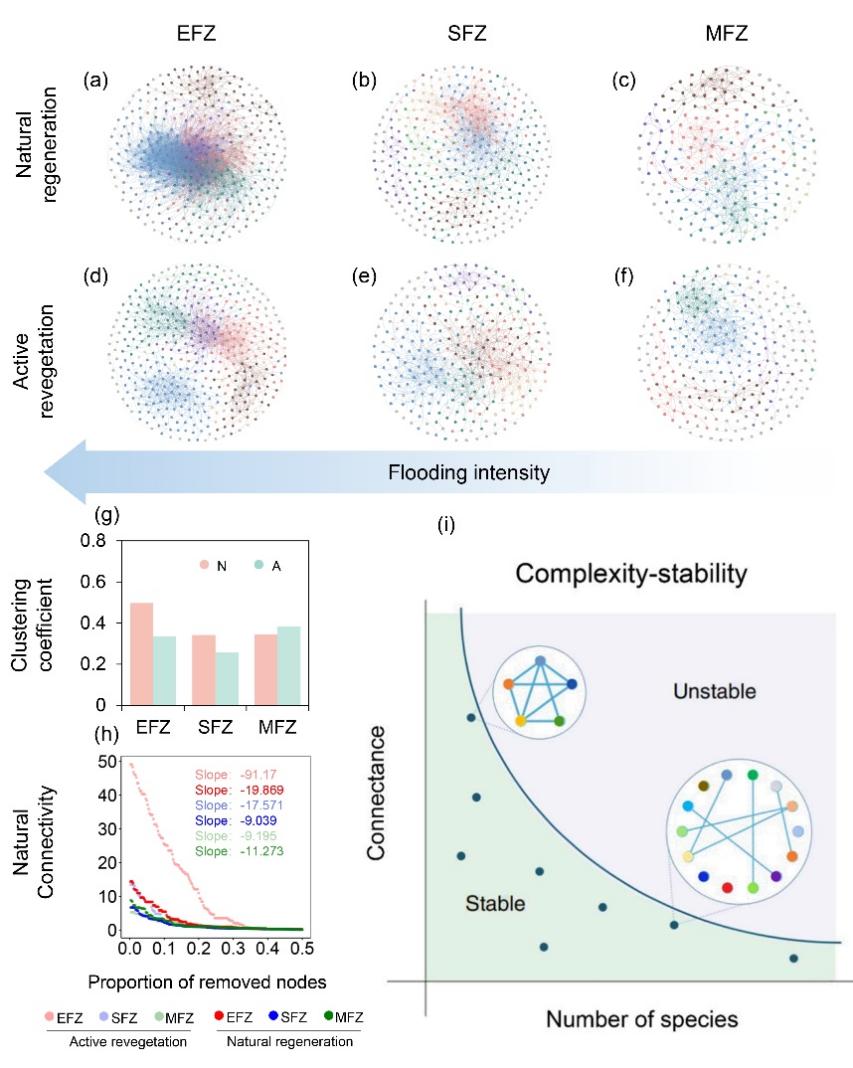Name:YE Chen
Tell:
Email:yechen922@wbgcas.cn
Organization:Wuhan Botanical Garden
Revegetation Contributes to Ecosystem Stability: Insights from A Microbial Viewpoint
2023-08-07
Worldwide hydroengineering, such as reservoir construction, creates the riparian zones with novel hydrological regime, which causes biodiversity loss and ecosystem degradation. Active revegetation (AR) and natural regeneration (NR) are two restoration approaches widely used to rehabilitate degraded riparian ecosystems. Nevertheless, there is still limited knowledge about the effects of restoration approaches and hydrological change on soil microorganisms, which are essential players in ecosystem processes and functions.
Systems Ecology Group of Wuhan Botanical Garden investigated the effects of restoration approaches and hydrological change on soil microorganisms at three flooding zones (extreme flooding zone, severe flooding zone, and moderate flooding zone) of AR and NR areas in the Three Gorges Reservoir.
Compared to severe and moderated flooding, extreme flooding increased network complexity, but decreased network stability (robustness) at NR area. These effects were mitigated by AR with decreased network complexity and improved network stability. The fluctuations in the microbial network were linked to soil microbial functions, including greenhouse gas (e.g., CH4, CO2, and N2O) fluxes and nutrient cycling. Additionally, network complexity and soil total carbon content were the dominant drivers for the microbial network stability at AR area and extreme flooding zone, respectively.
This study emphasized the trade-off between revegetation and flooding effects on the complexity and stability of microbial networks. Considering the large number of reservoirs worldwide, preserving microbial interactions through revegetation becomes crucial in mitigating the adverse impacts of hydrological alterations on ecosystem functions of reservoir riparian zones.
The research entitled “Revegetation promotes soil microbial network stability in a novel riparian ecosystem” was published in the Journal of Applied Ecology. It was supported by the National Natural Science Foundation of China and Youth Innovation Promotion Association of the Chinese Academy of Sciences.

(a-f) Microbial co-occurrence networks under different flooding intensities and restoration approaches across three-year experimental periods. The nodes in the co-occurrence networks represent OUTs, and the edges that connect these nodes represent correlations between OTUs. Different colors represent distinct modules. (g) The clustering coefficient of the microbial co-occurrence networks. (h) Robustness analysis is shown as the relationships between microbial natural connectivity and the proportion of removed nodes. EFZ, SFZ, and MFZ represent extreme flooding zone, severe flooding zone, and moderate flooding zone, respectively. “N” and “A” represent nature regeneration and active revegetation, respectively. (i) Complexity–stability patterns in natural microbial communities. The complexity–stability paradigm predicts that there is an upper limit to the overall complexity of stable ecosystems such that it would be improbable to observe communities with both a large number of species and a high degree of interspecific interactions ('connectance') (Yonatan et al., 2022).(Image by CHEN Meiping )